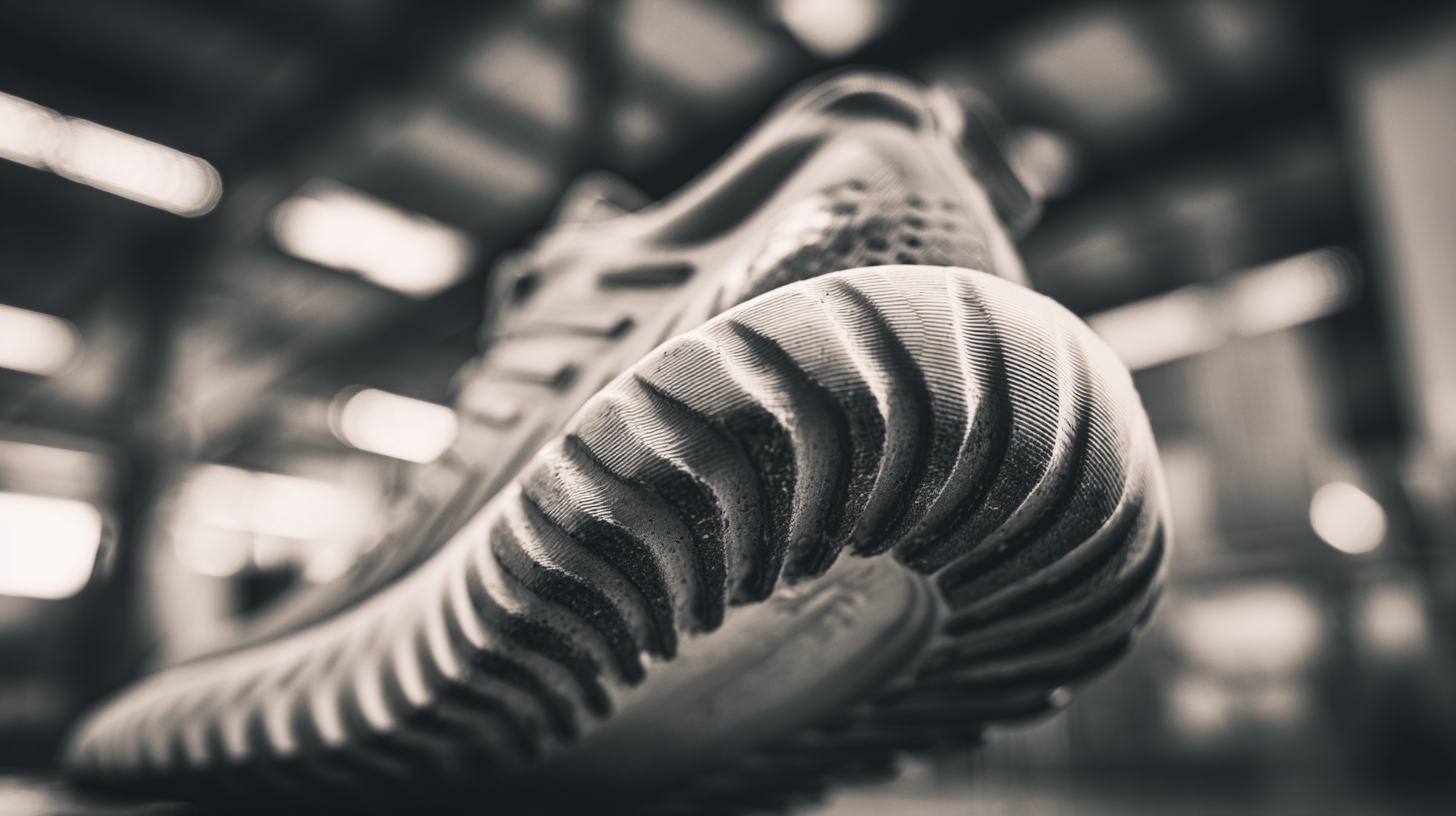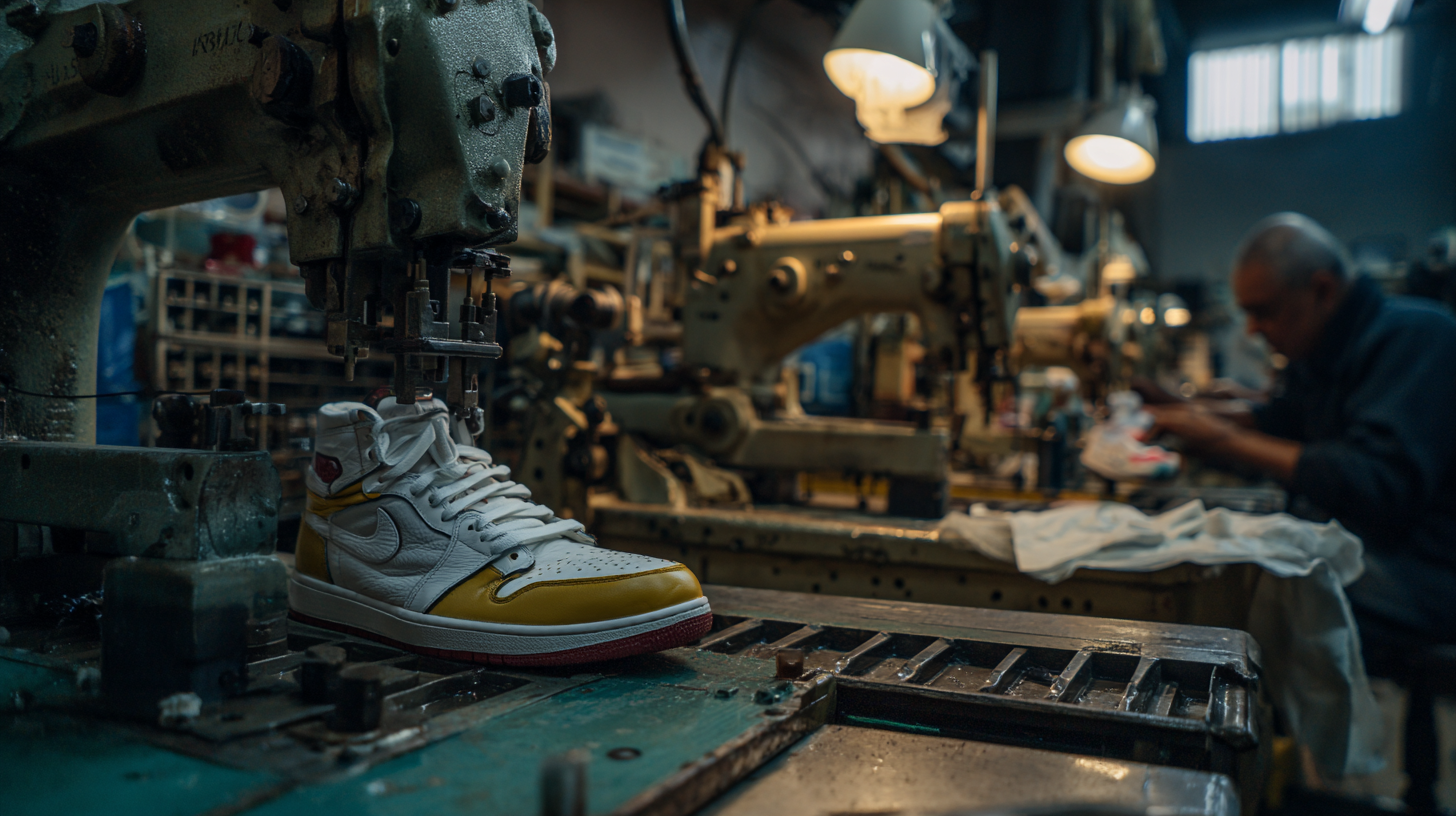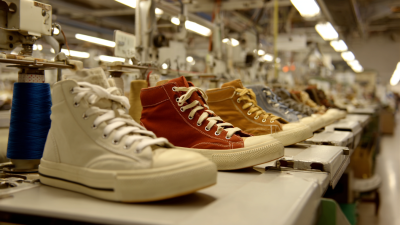
The sneaker industry has undergone a remarkable transformation over the past few decades, evolving from traditional craftsmanship to cutting-edge technological innovation. According to a report from Grand View Research, the global athletic footwear market is projected to reach $128.4 billion by 2027, driven by increasing consumer demand for high-performance sneakers. This evolution has been largely influenced by advancements in manufacturing processes and materials, allowing sneaker manufacturers to enhance product functionality while optimizing production efficiency.

With the integration of automation, 3D printing, and sustainable materials, the industry is at the forefront of redefining athletic footwear. As we explore "How to" navigate this dynamic landscape as a sneaker manufacturer, we will delve into the critical developments that are shaping the future of sneaker production and the strategic approaches needed to thrive in this competitive marketplace.
The landscape of sneaker manufacturing has undergone a remarkable transformation, shifting from a focus on
meticulous handcrafted quality to the precision of automated processes.
In the past, sneakers were crafted by skilled artisans who dedicated hours to perfecting each pair, ensuring a
unique quality and fit. However, according to a report by McKinsey & Company, the sneaker market is now
projected to reach $95 billion by 2025, driving a demand for faster
production methods that prioritize efficiency over traditional craftsmanship.
 This shift towards automation has led to the implementation of advanced technologies such as 3D printing and
robotics in sneaker production. For instance, Nike has embraced
automated systems that can produce shoes in as little as 90 minutes, significantly reducing lead times.
The adoption of these high-tech innovations allows manufacturers to maintain consistency and quality while scaling
production to meet rising consumer demands. Industry data indicates that companies investing in automation can achieve
production cost savings of up to 30%, highlighting a marked transition from
hands-on artisanal practices to a more streamlined, technology-driven approach.
This shift towards automation has led to the implementation of advanced technologies such as 3D printing and
robotics in sneaker production. For instance, Nike has embraced
automated systems that can produce shoes in as little as 90 minutes, significantly reducing lead times.
The adoption of these high-tech innovations allows manufacturers to maintain consistency and quality while scaling
production to meet rising consumer demands. Industry data indicates that companies investing in automation can achieve
production cost savings of up to 30%, highlighting a marked transition from
hands-on artisanal practices to a more streamlined, technology-driven approach.
The evolution of sneaker manufacturing has been significantly influenced by the introduction of advanced materials, transforming not only aesthetics but also performance and durability. Traditional sneakers often relied on leather and canvas, which, while durable, did not always provide optimal support and breathability. Today's manufacturers are harnessing cutting-edge materials like knitted fabrics, thermoplastic polyurethane (TPU), and advanced foams, pushing the boundaries of what sneakers can achieve. These modern materials create a lighter, more flexible design, allowing for enhanced comfort and responsiveness during athletic activities.
Furthermore, the incorporation of advanced materials has led to substantial improvements in durability. Sneakers engineered with synthetic fibers and specialized coatings are better equipped to withstand the rigors of varied terrains and weather conditions. For instance, water-resistant treatments and abrasion-resistant fabrics allow for extended usage without compromising the functionality of the shoe. These innovations not only cater to professional athletes looking for peak performance but also appeal to casual consumers seeking longevity and reliability in their footwear. As the sneaker industry continues to evolve, the focus on high-tech materials promises to redefine our expectations of what athletic footwear can deliver.
| Material Type | Manufacturing Technique | Performance Benefits | Durability | Environmental Impact |
|---|---|---|---|---|
| Mesh Fabric | Laser Cutting and Bonding | Lightweight, Breathable | Moderate, depends on care | Low, recyclable options available |
| EVA Foam | Injection Molding | Shock Absorption, Comfort | High, long-lasting | Moderate, potential pollutants |
| Gore-Tex | Membrane Technology | Waterproof, Breathable | High, resistant to wear | High, energy-intensive production |
| Recycled Plastics | Thermoforming | Sustainability, Versatility | Moderate, varies by source | Low, minimizes waste |
| Carbon Fiber | Weaving and Resin Infusion | High Strength, Lightweight | Very High, resistant to impact | High, complex recycling process |
The integration of 3D printing technology in sneaker manufacturing is reshaping how shoes are designed, produced, and customized. This innovation allows brands to produce highly personalized footwear that fits the unique shapes of individual feet, enhancing both comfort and performance. With this technology, athletes can benefit from tailored designs that accommodate their specific needs, helping to optimize their performance in various sports. The versatility of 3D printing not only drives efficiency in production but also significantly reduces waste, aligning with the growing demand for sustainable practices in the fashion industry.
Moreover, the collaboration between designers and advanced fabrication techniques is fostering a new era of creativity in sneaker design. Innovators are increasingly using digital tools to explore unconventional shapes and materials, pushing the boundaries of traditional sneaker aesthetics. From futuristic designs to custom fit options, 3D printing is enabling brands to offer products that are not only stylish but also functional. As this technology continues to evolve, it is set to revolutionize not just the sneaker market but the entire landscape of footwear, paving the way for a future where customization and innovation go hand in hand.

The sneaker industry has undergone significant transformation in recent years, particularly with the rise of sustainability trends in manufacturing practices. According to a report by Grand View Research, the global sustainable footwear market is expected to reach $150 billion by 2026, reflecting a growing consumer demand for eco-friendly products. Manufacturers are increasingly embracing innovative materials such as recycled plastics and organic cotton, leading to a reduced environmental footprint. Companies like Adidas and Nike have committed to using at least 50% recycled polyester in their footwear by 2025, showcasing a strong shift toward resource-efficient practices.
In addition to materials, the sneaker industry is also focusing on sustainable production processes. The use of 3D printing technology allows brands to minimize waste, as it creates precisely what is needed without excess byproducts. A study by the Ellen MacArthur Foundation pointed out that circular economy principles in footwear production could save businesses $160 billion annually by 2030 while also significantly reducing carbon emissions. With these advancements, the sneaker industry is not only making strides in innovation but also positioning itself as a key player in the global quest for sustainability.
In recent years, big data has become a pivotal force in shaping sneaker market trends and consumer preferences. Companies now analyze vast amounts of information from various sources—social media, online purchases, and consumer reviews—to gain insights into what drives buyer behavior. By utilizing advanced analytics, brands can segment their audience more effectively, tailoring their marketing strategies to meet the specific desires and interests of different consumer groups. This data-driven approach not only enhances customer engagement but also streamlines inventory management and product development.
Moreover, big data allows manufacturers to predict trends before they emerge. By tracking real-time market dynamics and consumer sentiments, companies can adapt their designs and marketing efforts swiftly to capitalize on current demands. For instance, insights gleaned from data can lead to limited-edition releases or collaborations that resonate with consumers, amplifying brand loyalty. As the sneaker industry continues to evolve, the integration of big data into decision-making processes will remain crucial, driving innovation and maintaining competitive advantage in an increasingly crowded market.






